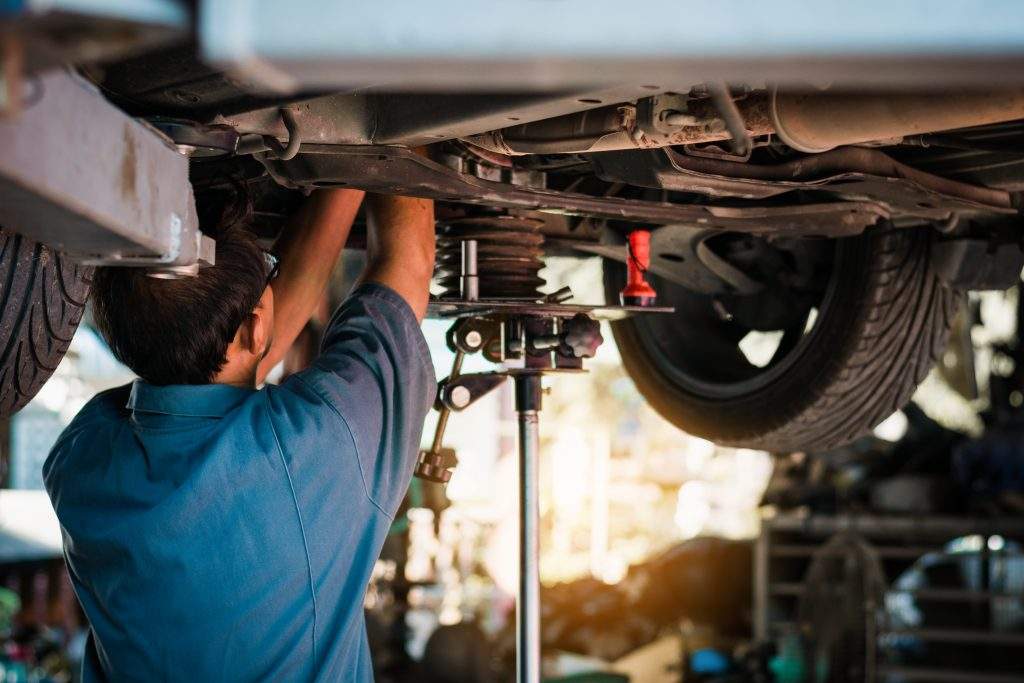The parts of a motor vehicle’s drive train convert energy from a simple stored form into kinetic energy, whether the vehicle is an automobile, boat, off-road vehicle, or an airplane. This conversion is made possible by traction on a specific surface, which propels the vehicle ahead over uneven terrain, the atmosphere, or even water. The drive train of a car, or any vehicle, is made up of the engine, transmission, drive shafts, differentials, and drive axels. The final drive, sometimes referred to as the drive axels, might consist of propellers, continuous tracks (as on a tank), drive wheels, etc. All of these drive types are components of the process by which the fuel injected into the vehicle is transformed into the mechanical energy that eventually propels the vehicle forward.
There are two different types of drive trains. The powertrain, which normally comprises all the components of the engine and transmission, is one category. The other components of the drive train fall under the second classification, which is referred to as the driveline. The parts that follow the transmission, such as the axel, drive shafts, and differentials, are referred to as the driveline. Depending on whether the vehicle is front wheel drive, rear wheel drive, four wheel drive, or all wheel drive, the configuration of these vehicle components may change.
Sir Alec Issigonis invented front wheel drive, which is often the most used type of drive train. In a front-wheel drive vehicle, the transaxle is connected to the back bottom of the engine, and the engine is practically positioned sideways under the bonnet. The differential and transmission are both included in the transaxle, which is a single unit. The term “constant velocity joint” (homo kinetic/CV joint) is required for front-wheel-drive cars to be attached to the half shafts. The CV joint makes it possible for power to be dispersed to both tires easily and equally, maintaining vehicle control while doing so.
The engine is placed vertically or perpendicularly to the driveshaft in rear-wheel drive vehicles. The engine is directly connected to the transmission, which transmits power or torque to the differential unit through the driveshaft. The driving shaft and the differential unit are joined by a component known as a U-joint. The differential unit then transfers power to the back two wheels via the U-joint.

Four-wheel drive, which is a little more complicated, combines features of both front and rear wheel drives. Only when the car is moving in a straight line do the front and back wheels rotate at the same rate. This fact implies that two distinct differentials, one for the front and one for the back, are required to manage power distribution. But there is a difference between AWD and 4WD (all wheel drive and four wheel drive). The key difference is the addition of two differentials—one center compact differential and one in the vehicle’s rear—to help distribute power more evenly in all-wheel drive. There is no central differential with four-wheel drive; instead, there are two separate differentials that are each controlled by a transfer case.
Although front wheel drive is the most prevalent drive train, all of the various methods are utilized frequently and can be regarded as elaborate and complex. Every drive train style has similarities and variances that correspond to their advantages and disadvantages. Some of the benefits and drawbacks of the various drive train types can be summed up. The advantage of front wheel drive is that it makes the car lighter, which improves fuel economy. Additionally, FWD gives the driver superior maneuverability in bad weather and more room for personal space within the car. The engine is more crowded as a result of the complete drive train being up front, which is one of the drawbacks. Due to the space restrictions, repairs and maintenance are more difficult. Second, because of the torque distribution, steering can become a little difficult while accelerating aggressively. Third, because there is greater weight in the front of the car with FWD, the front tires need to be rotated more frequently.
Simply put, rear wheel drive’s advantages and disadvantages are the exact opposite of those of front wheel drive. RWD has a better weight distribution because of how the car’s components are set up. Rear wheel drive improves steering because the force is applied from the back of the vehicle when traveling in typical weather conditions. The front tires and suspension experience less wear and tear. And third, there is more space where the engine is, making repairs easier. If your car has all-wheel drive or four-wheel drive, happy off-roading! There is really only one benefit to these drive systems, and that is better traction.
Here at the Law Firm of Brian S Brijbag, we will assist all our personal injury clients with their property damage claim. We will help you get a fair offer to repair or replace your vehicle. You were already a victim of the accident, why should you now become a victim of the insurance process? Let us fight for you!
Proudly Serving:
- Spring Hill
- Brooksville
- Timber Pines
- Weeki Wachee
- Inverness
- Crystal River
- Homosassa
- Hudson
- Shady Hills
- Bayonet Point
